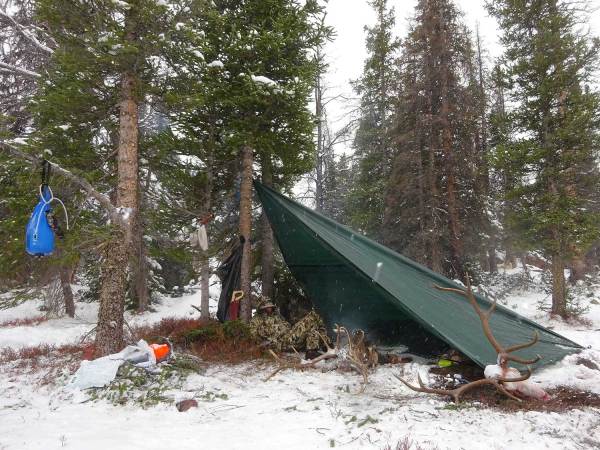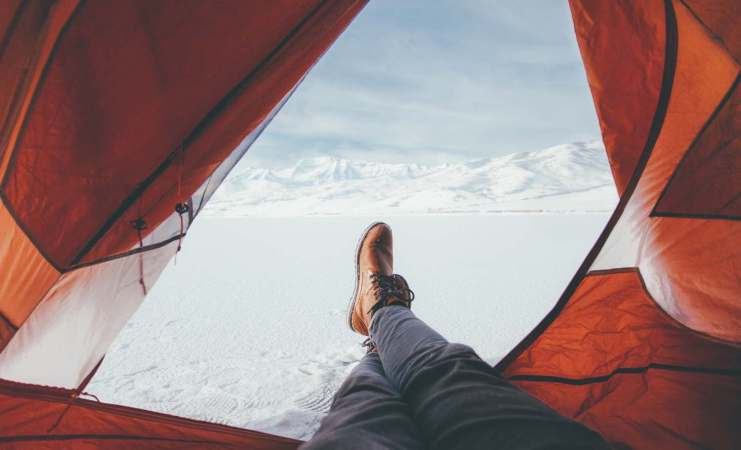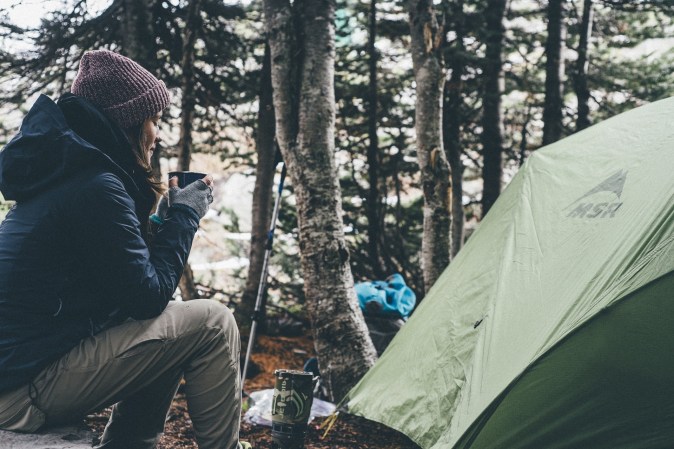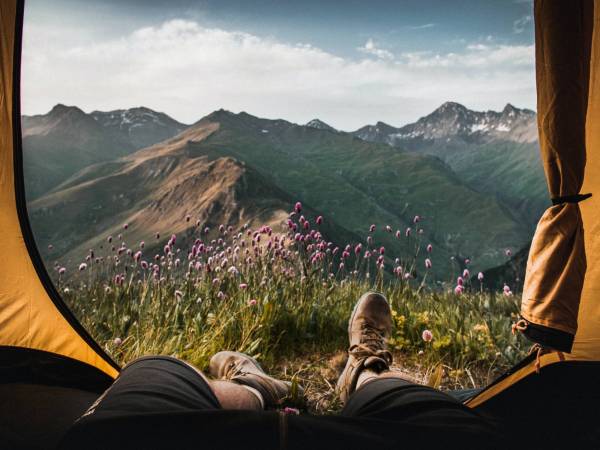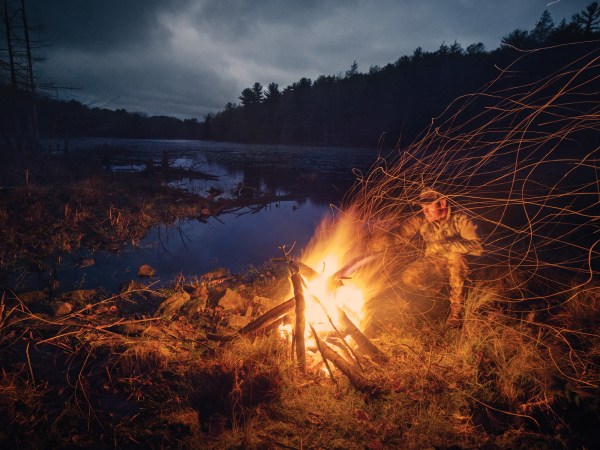

We may earn revenue from the products available on this page and participate in affiliate programs. Learn more ›
For thousands of years, tents have been the shelter of choice for those sleeping outdoors. They offer cover, a way to keep off the creepy crawlies, and a sense of familiarity—we sleep on a flat surface in a four-walled structure every other day of our lives; why not do so outside, too? But there’s a better option, an alternative that not only offers a nice night’s sleep in the great outdoors, but a comfortable way to commune with nature.
Hammock camping is growing increasingly popular among outdoors enthusiasts, mainly because hammocks provide such a good night’s sleep that you’ll wonder why you ever willingly slept on the ground. With a few bits of advice, you can ditch your tent and greatly increase the comfort and enjoyment you experience while spending a night in the woods.
A nice hammock will rock you right to sleep
Sure, hammocks are comfortable—everyone who’s ever swung in one at a family barbecue knows that—but did you know they can offer a better night’s sleep than your bed? Studies show that the rocking motion of a hammock can lull you to sleep faster and facilitate a deeper sleep than a flat, stationary surface.
Hammocks let you, a grown adult, get rocked to sleep like a baby. Once you’re swaddled in their warm embrace, all the swaying back and forth encourages you to nod off. In tests, people who napped or spent the night in a rocking bed or hammock fell asleep faster and slept better than those in a traditional bed. In fact, it changed participants’ brain chemistry by slowing down their brain waves, which indicates deeper sleep.
Hammocks do all tents can do, and more
Science aside, hammock camping isn’t for everyone, so think about your needs and what a hammock might offer in place of a tent before you think about swinging between two trees. For starters, consider comfort. A thick inflatable sleep pad certainly makes the hard ground more tolerable, but a hammock may be even easier on sore bodies that have been hiking for days.
“Hammock camping relieves pressure points, so your joints and muscles recover faster,” says Greg McEvilly, founder of Kammok, an Austin-based hammock manufacturer who fell in love with hammock camping after the first time he tried it. “It really levels up your sleeping experience.”
Now, let’s talk about cover. Many think a tent offers more secure shelter, but that’s only in theory. Take rain, for instance—if there’s a significant amount of precipitation, the air inside most tents will still feel damp and clammy, even with sealed seams and waterproof floors. A hammock, on the other hand, hangs high above the mud and streams of water that form during a downpour. As long as you have a tarp or some sort of covering overhead, you’ll stay warm and dry.
[Related: How to stay warm when sleeping in the frigid outdoors]
A hammock also keeps you cooler than a tent in hot weather. When you’re suspended above the ground, air can move all around you, which offers relief when it’s 90 degrees and muggy. On the other hand, you’ll need to take extra steps in cooler climates to prevent that same convective heat loss.
“Cold butt syndrome is a big thing in hammock camping,” McEvilly says. Your best bet to combat it is with an underquilt, which hangs just below the hammock and traps in body heat. You can also use a sleeping pad or synthetic sleeping bag to protect your underside from the cool air below. Down-filled sleeping bags won’t work as well, because they compress under the weight of your body, shrinking the layer between your butt and the air outside. If it’s really cold, you might need all three of these options.
Finding good anchor points can be a challenge, but a hammock is often quicker and easier to set up than a tent, and can be hung in many conditions a tent wouldn’t fare so well—like hard or uneven ground. Also, quality hammock systems, complete with insect net and rain fly, tend to be lighter and pack down smaller than many tents, which is a definite plus for backpackers.
There are plenty of reasons to try hammock camping, but there is also a learning curve when it comes to adjusting to sleeping on a non-flat surface.
How to set up your hammock

First, find two mature, live trees at least 12 inches in diameter and 12 to 15 feet apart, McEvilly says. Wrap the straps—preferably ones that are 1 to 2 inches wide to protect the bark and delicate cambium layer of the trees—around the trunks at head height and clip the hammock in so it sags slightly (at about a 30-degree angle).
“If it’s pulled tight, you’re not going to have a comfortable night’s sleep,” McEvilly says. Make sure the lowest part of the hammock hangs at least 18 inches off the ground to ensure you’re fully suspended above the ground after you climb in.
After you’ve hung your hammock, set up your insect net (if you have one), and then your rain fly or tarp above it. A ridgeline—a length of cord stretched tightly above your hammock between the trees—will keep both from sagging. Stake out the corners of the fly to keep it taught or prop it up with trekking poles if your fly allows. The standard setup resembles an A-frame tent, where half the fly stretches out on each side of the ridgeline.
When it’s time to sleep, opt for a diagonal sleeping position instead of pointing your head toward one tree and your feet at another. This position will allow you to sleep in a slightly flatter orientation, which is more comfortable. Position yourself so there’s equal distance between your head and feet, and each end of the hammock. With this setup, you can sleep on your side just as comfortably as on your back.
Tips and tricks for hammock camping
For best results, make sure you select the right size hammock for you. Most come in single and double size, so if you’re 5-foot-4 or shorter, McEvilly recommends a single. Any taller and you’ll likely be more comfortable in a double, he says. If you can, try out both and decide which one you like best.
Hammocks can make a good seat, too. If you’re sitting around cooking or chatting with your fellow campers, fold the fabric of your hammock in half lengthwise to provide a more stable seat.
[Related: How to build and extinguish a campfire without sparking a catastrophe]
If it rains, keep dry by setting your fly at the right height for the weather. In a light rain, mount the ridgeline and your fly higher, near the straps wrapped around the trees, so you can stand and walk around under cover. To deal with heavier rain, lower the ridgeline and fly to the height of the carabiners, where the hammock clips into the straps. This will help prevent rain from blowing into your hammock.
You can also keep your gear off the ground by clipping it into the carabiners, or you can opt for a hammock with accessory clips or stash pockets. This will allow you to store headlamps, water bottles, or bug spray within reach.
If you are willing to give it a try, hammock camping can provide a more comfortable and relaxing night’s sleep, which almost always means a better start to a day spent outdoors. Set it up right, find your sweet spot, and a night swinging under the stars may become your new favorite way to enjoy nature.
